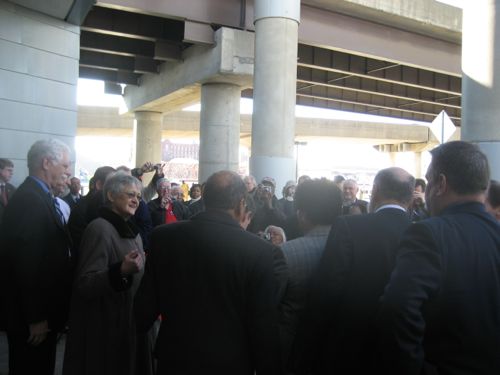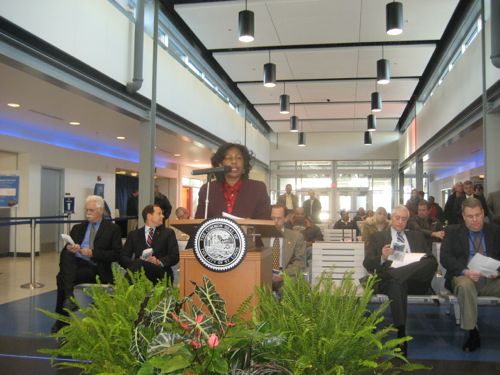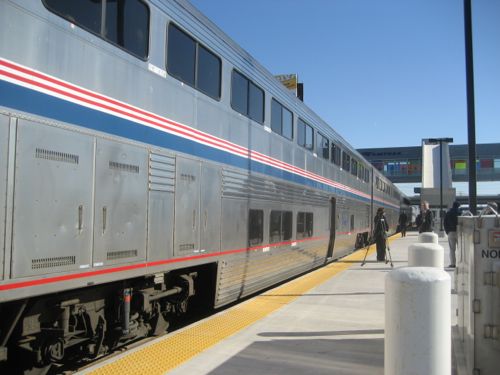Neighborhood meetings not a high priority for readers, new meeting structure needed
|
|
I’m going to make a broad generalization: readers of this and other local blogs care about their neighborhood, their municipality and their metropolitan region as a whole. I know I do and I sense that many of you do to. The poll last week confirmed my theory.
Q: How often do you attend your local neighborhood association meetings?
- Never 31 (35%)
- Rarely 22 (25%)
- Every time 18 (20%)
- Occasionally 18 (20%)
More readers indicated they never go to their neighborhood meeting than those who always attend. Response was low, only 89 out of 2,873 visitors during the week.
So how does this prove they care? Wouldn’t their butt in a chair at the meeting be proof they care? By one measure, yes. Continuing with generalizations, some love meetings. They want to have meetings to plan future meetings and then have meetings to discuss how the meetings went. The rest of us want to actually get something done.
It often comes down to personality type. I personally absorb issues quickly and then get bored and impatient. While others are still understanding the problem (or saying XYZ isn’t a problem) I’ve already figured out a handful of possible solutions. I want to get all solutions on the table and determine which should be looked at in greater detail. There is always one person that realizes the discussion will lead to change. This type doesn’t like change and will now work to defend the way it has always been done. Doesn’t matter what it is or the evidence that the old way no longer works.
What also doesn’t work is the 19th Century Robert’s Rules of Order being used as a structure for groups in the 21st Century. Better alternatives exist but we so often turn to what we know rather than what is best. MIT.edu has a good guide called A SHORT GUIDE TO CONSENSUS BUILDING: An Alternative to Robert’s Rules of Order for Groups, Organizations and Ad Hoc Assemblies that Want to Operate By Consensus. From the intro:
Assume that a few dozen people have gotten together, on their own, at a community center because they are upset with a new policy or program recently announced by their local officials. After several impassioned speeches, someone suggests that the group appoint a moderator to “keep order” and ensure that the conversation proceeds effectively. Someone else wants to know how the group will decide what to recommend after they are done debating. “Will they vote?” this person wants to know. At this point, everyone turns to Joe, who has had experience as a moderator. Joe moves to the front of the room and explains that he will follow Robert’s Rules of Order. From that moment on, the conversation takes on a very formal tone. Instead of just saying what’s on their mind, everyone is forced to frame suggestions in the cumbersome form of “motions.” These have to be “seconded.” Efforts to “move the question” are proceeded by an explanation from Joe about what is and isn’t an acceptable way of doing this. Proposals to “table” various items are considered, even though everyone hasn’t had a chance to speak. Ultimately, all-or-nothing votes are the only way the group seems able to make a decision.
As the hour passes, fewer and fewer of those in attendance feel capable of expressing their views. They don’t know the rules, and they are intimidated. Every once in a while, someone makes an effort to re-state the problem or make a suggestion, but they are shouted down. (“You’re not following Robert’s Rules!”) No one takes responsibility for ensuring that the concerns of everyone in the room are met, especially the needs of those individuals who are least able to present their views effectively. After an hour or so, many people have left. A final proposal is approved by a vote of 55 percent to 45 percent of those remaining.
If the group had followed the procedures spelled out in this Short Guide to Consensus Building, the meeting would have been run differently and the result would probably have been a lot more to everyone’s liking. The person at the front of the room would have been a trained facilitator — a person with mediation skills — not a moderator with specialized knowledge about how motions should be made or votes should be taken. His or her job would have been to get agreement at the outset on how the group wanted to proceed. Then, the facilitator or mediator would have focused on producing an agreement that could meet the underlying concerns of everyone in the room. No motions, no arcane rituals, no vote at the end. Instead, the facilitator would have pushed the group to brainstorm (e.g. ” Can anyone propose a way of proceeding that meets all the interests we have heard expressed thus far?” ) After as thorough consideration of options as time permitted, the facilitator would ask: “Is there anyone who can’t live with the last version of what has been proposed?” “If so, what improvement or modification can you suggest that will make it more acceptable to you, while continuing to meet the interests of everyone else with a stake in the issue?”
If neighborhood meetings were run by consensus, rather than Robert’s Rules of Order, participation would be greater and group decisions better.
– Steve Patterson






